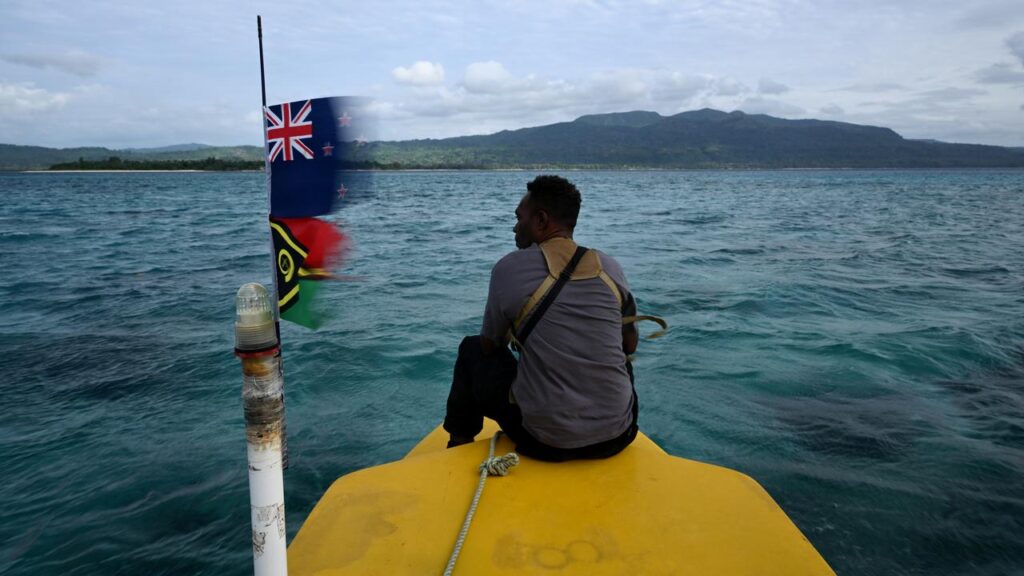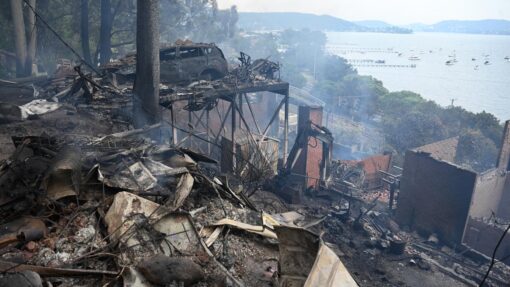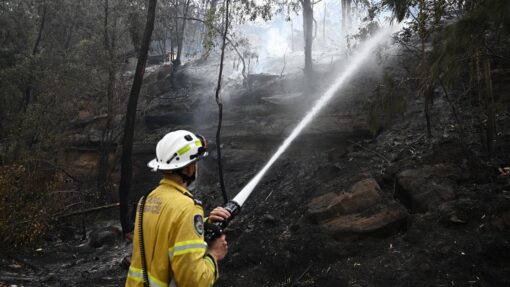The long, winding road to a climate-resilient Pacific
Poppy Johnston |

Helen Tony’s life in a small and low-lying coastal village in the South Pacific is made increasingly difficult by a changing climate.
Not only do rising seas and intensifying storms monster the shore and threaten homes, the global consequences of emitting more greenhouse gases extends to food and income security concerns for her family.
Ms Tony lives in the village of Unakap on Nguna, one of Vanuatu’s small islands off the north coast of Efate and about 4000km east of Cairns.
In the 15 years she’s resided there, growing fruit and vegetables has become harder especially after cyclones that bring destructive insects in their wake.
Her husband is also catching fewer fish due to reef and ecosystem damage from extreme weather, higher seawater temperatures and ocean acidification.

Their family of five is able to make money to buy food from local markets but one of their income sources, the mats Ms Tony makes from pandanus leaves, has taken a hit.
To weave them, along with fans, purses and baskets, the leaves need to be dry but more rain than is typical has been shrinking her output and the cash she generates selling her wares.
Living in an archipelago vulnerable to volcanoes, earthquakes, tsunamis and landslides, ni-Vanuatu are no strangers to disaster and the long road to recovery that follows.
But the addition of climate change impacts and extreme weather events including more intense cyclones and storms are making it harder to bounce back.
World Vision humanitarian emergency security affairs manager Pallen Abraham Philip says the country has always experienced cyclones but they are becoming stronger and increasingly hitting out of season.
“They’re still in the recovery mode, then the next hits,” he tells AAP.

Category five system Pam, to which Australia was a first responder, devastated the country in 2015, and there have been other severe storms since including twin tropical cyclones Judy and Kevin that tore similar pathways just days apart in 2023.
A lot of money is needed to help vulnerable regional and rural communities recover and adapt and there is at least some funding funnelled into Vanuatu through a complex web of instruments and programs.
On Nguna and neighbouring islands, dedicated global project the Green Climate Fund is supported by the Vanuatu government and humanitarian organisation Save the Children.
Australia’s $50 million contribution is part of its broader $100 million package of initiatives to foster preparedness including the Pacific Resilience Facility.
This, in turn, allows the Pacific to invest in small-grant but high-impact initiatives to help make communities disaster-ready.
Whitely Tasaruru, who is the Nguna and Pele area climate change manager within Vanuatu’s Community-based Climate Resilience Project, says each village has its own set of issues and preferred fixes.

His job is partly about making sure various adaptation measures like coastal tree planting, sea wall construction and coral restoration mesh cohesively.
For Nguna, gradually relocating low-lying villages to higher ground on the island is the long-term goal.
In the meantime, the community wants to buy extra time by protecting buildings and infrastructure, including the road connecting communities close to the shore.
Planting more vegetation and trees along the shoreline should help, Mr Tasaruru says, as will a planned sea wall in a spot known to be vulnerable to erosion.
But sometimes climate impact solutions can unintentionally create new problems.
For example, work under way to build a road to higher ground for relocating households has been reliant on mining sand on the island’s beach for the slab cement structure.

But extracting the sand has created openings and channels on the beach that are leaving nearby settlements more exposed to storm surge and wash damage.
“Many community members here have concerns,” Mr Tasaruru tells AAP.
He believes sourcing sand from Port Vila, the city on the mainland island of Efate, is a better option.
On neighbouring Pele, Salome Kalo from Pilliura village has been instrumental in getting solar-generated food drying up and running.
Located on sandy and therefore less productive soil, food security has become an issue for the village, especially when compounded by storms and unfavourable weather.

To give themselves more flexibility, villagers have been preserving fruit, vegetables and other produce using a solar-powered dryer that blows warm air to prevent moisture.
“It helps us a lot,” Ms Kalo says.
But a few months ago, the dryer in her village was destroyed in a storm.
“We have to build that again this month.”
Like on the neighbouring island, Pele communities have scouted out higher ground to move to over time.
Edward Lani, also from Pilliura village, expects their way of life to change when forced to relocate away from the beach.

“There are people who live along the coast, they depend entirely on the ocean for food but if they move inland, it would change their way of getting food for the household,” he says.
But for Mr Lani, moving inland is not his biggest concern.
He is more worried young people will leave the island entirely to avoid worsening environmental conditions.
AAP


